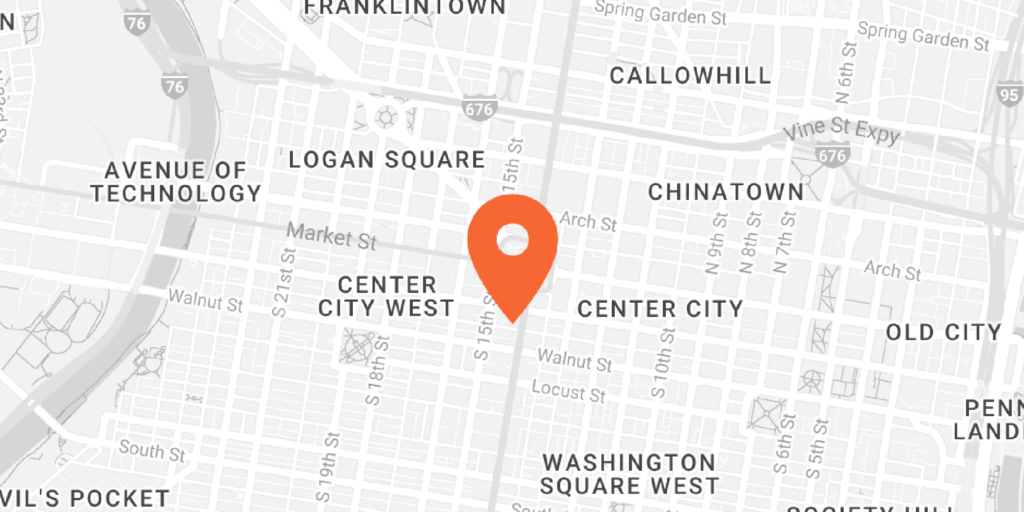If you’re interested in becoming an orthodontist in Center City and provide residents with the best braces Center City has to offer, here are some factors to consider when studying to be a Philadelphia orthodontist. It’s important to note that dentists and orthodontists differ. While both of these dental professionals help patients maintain their oral health, a dentist focuses on the teeth, gum, nerves and jaw. An orthodontist focuses on correcting bites, occlusion and straightening the teeth.
Orthodontists in Philadelphia have to undergo extensive training from both a clinical and scientific standpoint. In many cases, you may have already had dentistry training, and orthodontics will be part of your graduate program. You’ll have to learn about all the components of the mouth, as well as the bones in the remainder of the face. When you’re in orthodontic school, you’ll also learn how oral health can affect the entire body. As with most medical professionals, once you’ve completed the academic portion of your training, you’ll have to complete a residency. This means you have to get hands-on training in a medical facility so you can get used to performing various treatments. Your residency also gives you the opportunity to interact with patients and practice professionalism.
When you want to become an orthodontist in Philadelphia, you’ll learn the treatment philosophies for each procedure you’ll perform. Whether you have to give a patient braces or aligners, retainers or dental implants, you need to be able to explain the benefits and purpose of the procedure. Your patients will likely have questions about their upcoming procedures, and you’ll need to feel comfortable explaining all parts of orthodontic treatment.
Keep in mind that you’ll be dealing with adolescents and teenage patients often when you work in orthodontics. Since these young patients are still developing physically, you’ll have to acquire special skills to address their teeth, jaw and overall oral issues effectively. You’ll also have to talk to the parents of your patients about preventative treatments that will keep developing teeth safe and healthy. Adolescents is usually the time when people get braces and retainers, although you will likely have older patients as well due to new technologies for straightening teeth.
It’s also important to learn about the particular treatments you’ll perform as an orthodontist. For instance, you’ll help patients with overcrowded teeth by realigning the teeth using a variety of procedures and devices. An orthodontist is also trained to treat aesthetic issues. When the teeth and jaws are misaligned, the shape of the face can be affected. A bad bite (overbite or underbite) can cause misshapen jaws and a face that is not shaped correctly. You can realign and restructure the jaw, teeth and lips to help your patients achieve a beautiful smile.
Leaning to install braces is essential for an orthodontist. Braces are a combination of brackets which are fixed on each tooth and an archwire that connects the brackets. This is used to push the teeth into their proper alignment. Braces are made of ceramics, metal or clear material. Your patients can choose from these options depending on how concerned the patient is with aesthetics. For instance, some patients may want clear braces if they don’t want the braces to look as obvious.
Facemasks and headgear are also necessary for some patients. These are necessary tools to treat an underbite or overbite. Sometimes, you’ll have to give headgear or facemasks to a patient in addition to braces to both straighten the teeth and realign the jawbone.
Retainers are necessary for some patients after they have worn braces or headgear. The retainer helps to keep the teeth in place and remain straightened. Retainers are worn until the underlying bone goes back into the right position. In some cases, you may have to install a permanent retainer on the underside of the teeth so that patients can keep their stunning smiles without having to wear braces again. Sometimes, you will have to install braces a second time for patients, but a retainer should be an option after the second round of braces to keep the teeth from moving again.
Orthodontists often have to work with oral surgeons to perform specialty procedures. Root canals and dental implants are sometimes necessary to prevent cavities and replace missing teeth. For implants, a small hole is drilled into the gums to provide space for an anchor. A synthetic tooth is attached to the anchor and patients can use the implants just like a real tooth. You can also talk to older patients about dentures and implants that will improve their ability to eat and give them a healthier smile. You may have to treat various forms of gum disease and tooth decay before installing implants or dentures, since the focus of your line of work is to achieve oral health as well as aesthetic satisfaction.
You can study at a number of top-notch institutions to get the training you need for orthodontist. The University of Pennsylvania offers great programs for orthodontic students. You can also receive your training from the Kornberg School of Dentistry at Temple University. The Einstein Healthcare Network is one of the best places in the city to receiving professional guidance and hands-on job development that could make you one of the top orthodontists in the city. Each school may vary in their requirements so it’s best to research the institutions you’re interested in so you can choose the school that’s best for your desired skill set and career goals.
There are plenty of quality options to choose from when you want to become an orthodontist in Philadelphia. Once you receive the proper training, you can offer Invisalign in Philadelphia as well. This allows you to help patients get the smile they want without having to wear conventional braces. When you have the right set of skills, you can choose to open your own practice or work with a dental team like Orthodontics Limited. When you’re just starting out in orthodontics and want to get quality on-the-job training and work with a friendly and skilled team, Orthodontics Limited can provide the employee services you need so you can deliver the best service to patients.




